2-Day Offbeat Santo Domingo Itinerary for Couples: Outdoor & Relaxation
Santo Domingo, Dominican Republic
2 days
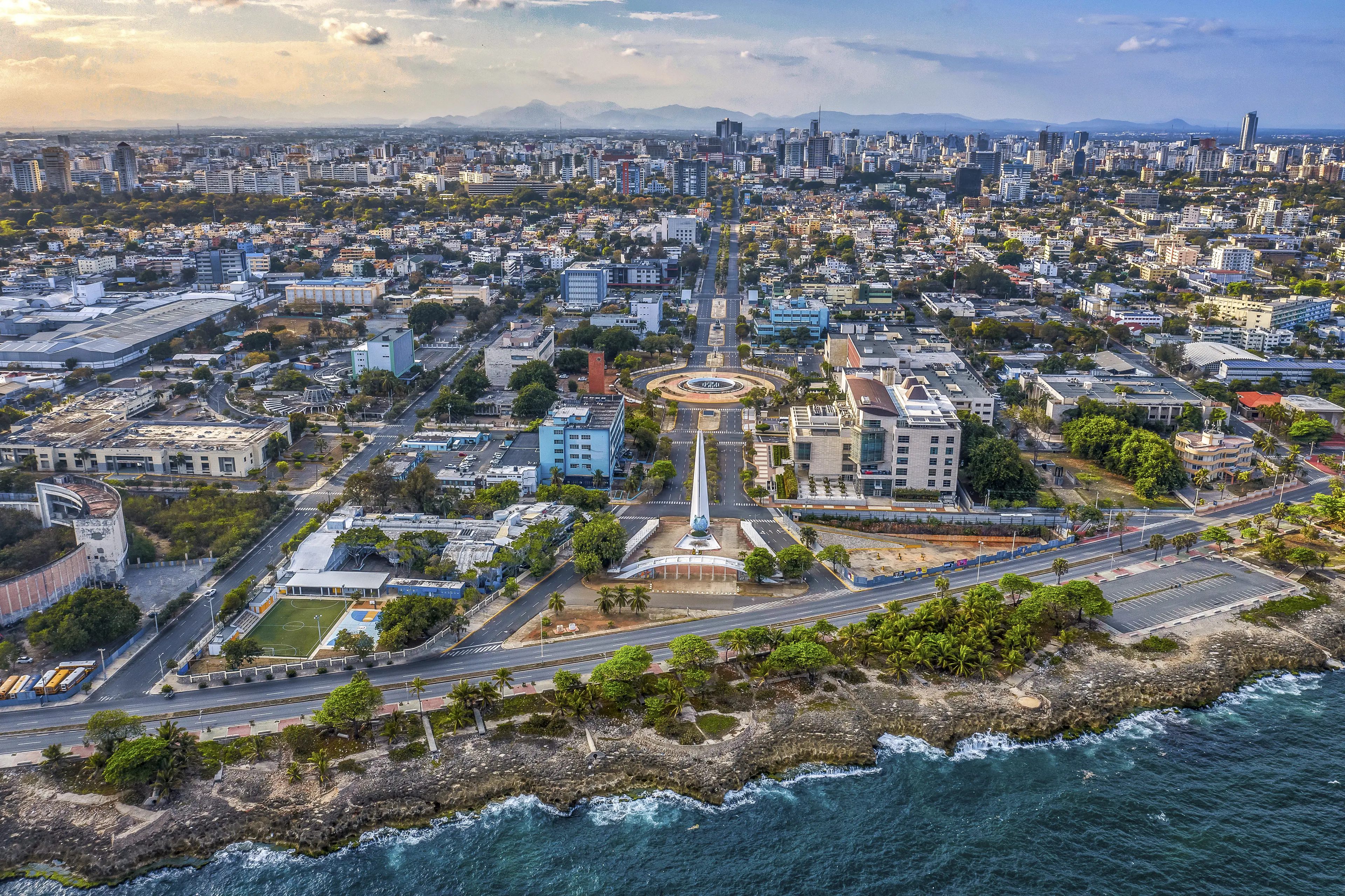

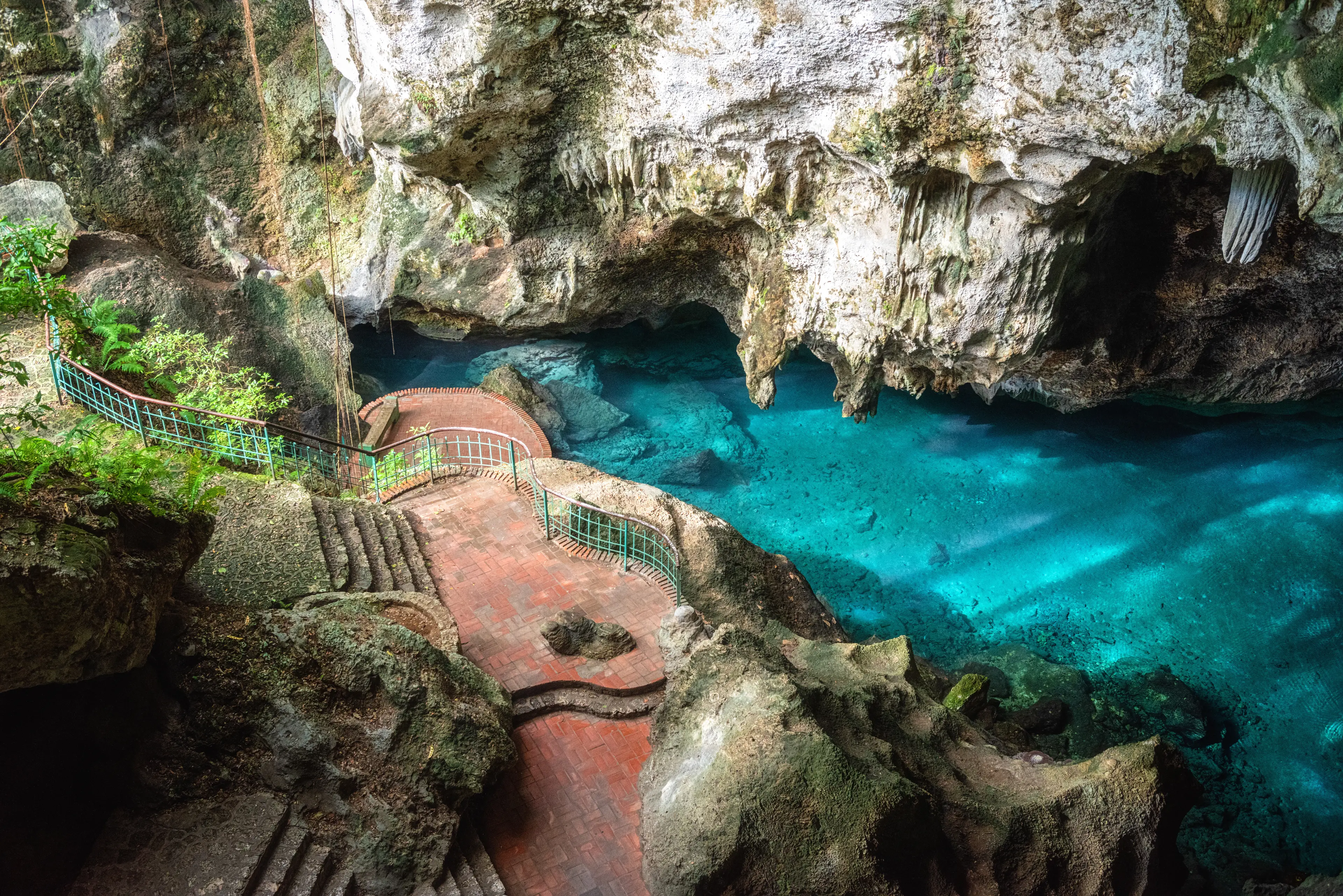
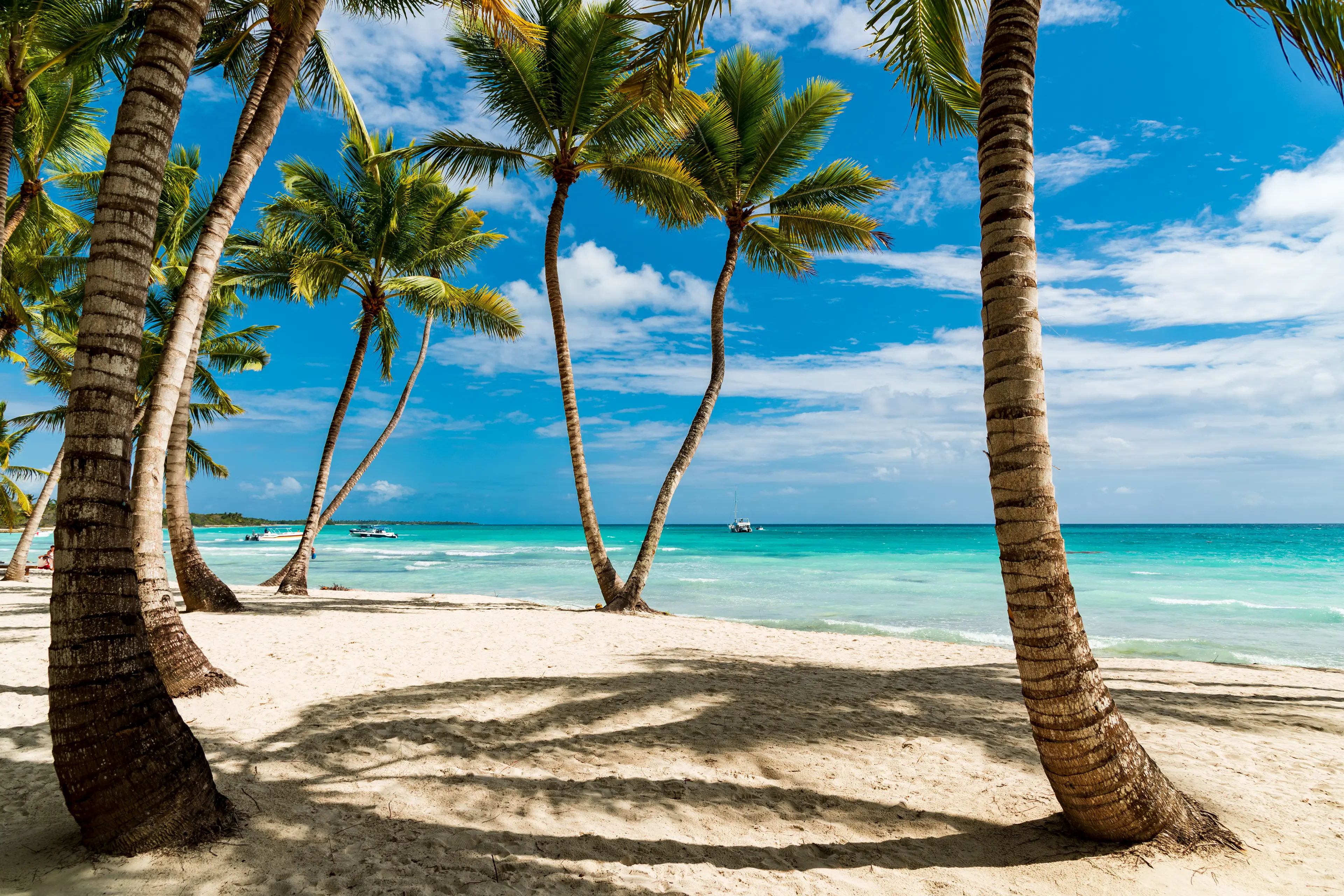
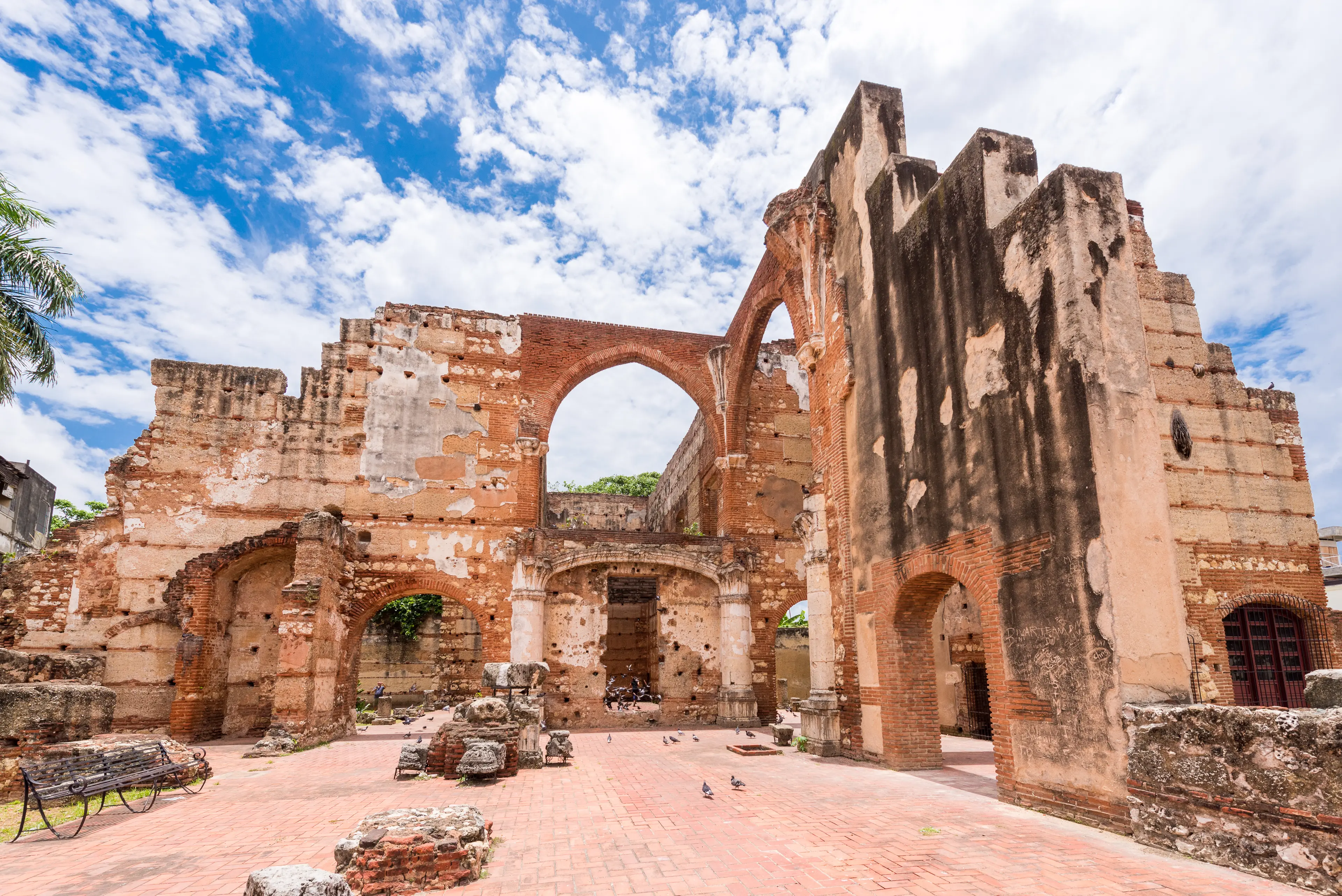
About Santo Domingo, Dominican Republic
Experience the vibrant culture and rich history of Santo Domingo, the capital of the Dominican Republic. As the oldest city in the New World, it boasts a stunning array of Spanish colonial architecture, including the first cathedral in the Americas. Explore the cobblestone streets of the Zona Colonial, a UNESCO World Heritage Site, or enjoy the city's modern amenities, such as world-class dining, shopping, and nightlife. Santo Domingo's location on the Caribbean Sea also offers beautiful beaches and water sports. With its blend of old-world charm and modern excitement, Santo Domingo is a must-visit destination for any traveler.
2-Day Itinerary
Day 2
Nature, Rural Exploration and Dominican Flavors
Morning
Begin your second day with a visit to the Botanical Garden. Explore the lush tropical flora, take a peaceful boat ride on the garden's lake, and enjoy the tranquility away from the city bustle.
Lunch
Have lunch at a local restaurant near the Botanical Garden. Try the local specialty, chivo guisado (stewed goat), and wash it down with a glass of fresh coconut water.
Afternoon
Spend the afternoon exploring the rural areas outside of Santo Domingo. Take a guided tour of a local Coffee Plantation, where you can learn about the coffee-making process and sample some freshly brewed Dominican coffee.
Dinner
Enjoy a dinner at a local farm-to-table restaurant. Experience the fresh flavors of Dominican cuisine, made with locally sourced ingredients.
Evening
End your day with a visit to a local Rum Distillery. Take a tour to learn about the rum-making process, and finish with a tasting of some of the finest Dominican rums.
Attractions in Itinerary (6)
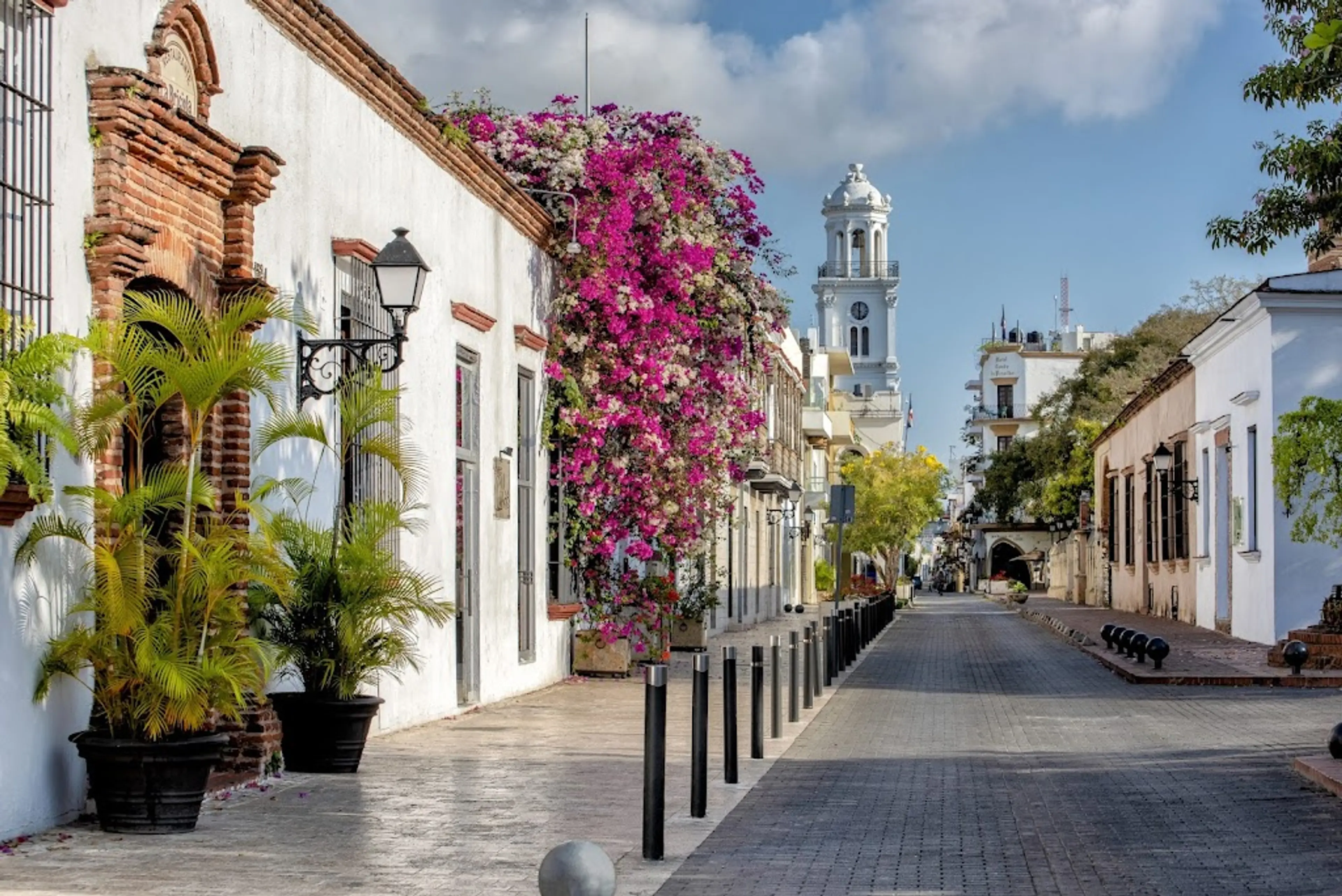
1Zona Colonial
A UNESCO World Heritage site, Zona Colonial is the historic central neighborhood of Santo Domingo and the oldest permanent European settlement of the Americas. It has been the center of the city since colonial times, with many preserved 15th and 16th century buildings.

2Parque Nacional Los Tres Ojos
A natural park that features a series of three lakes located in open-air limestone caves. The park offers guided tours that take visitors through the caves and around the lakes, providing a unique opportunity to explore this natural wonder.

3Botanical Garden
The National Botanical Garden is a 400-acre park that features a variety of different habitats, from desert to rainforest. It's home to over 2,000 species of plants, making it a must-visit for nature lovers.
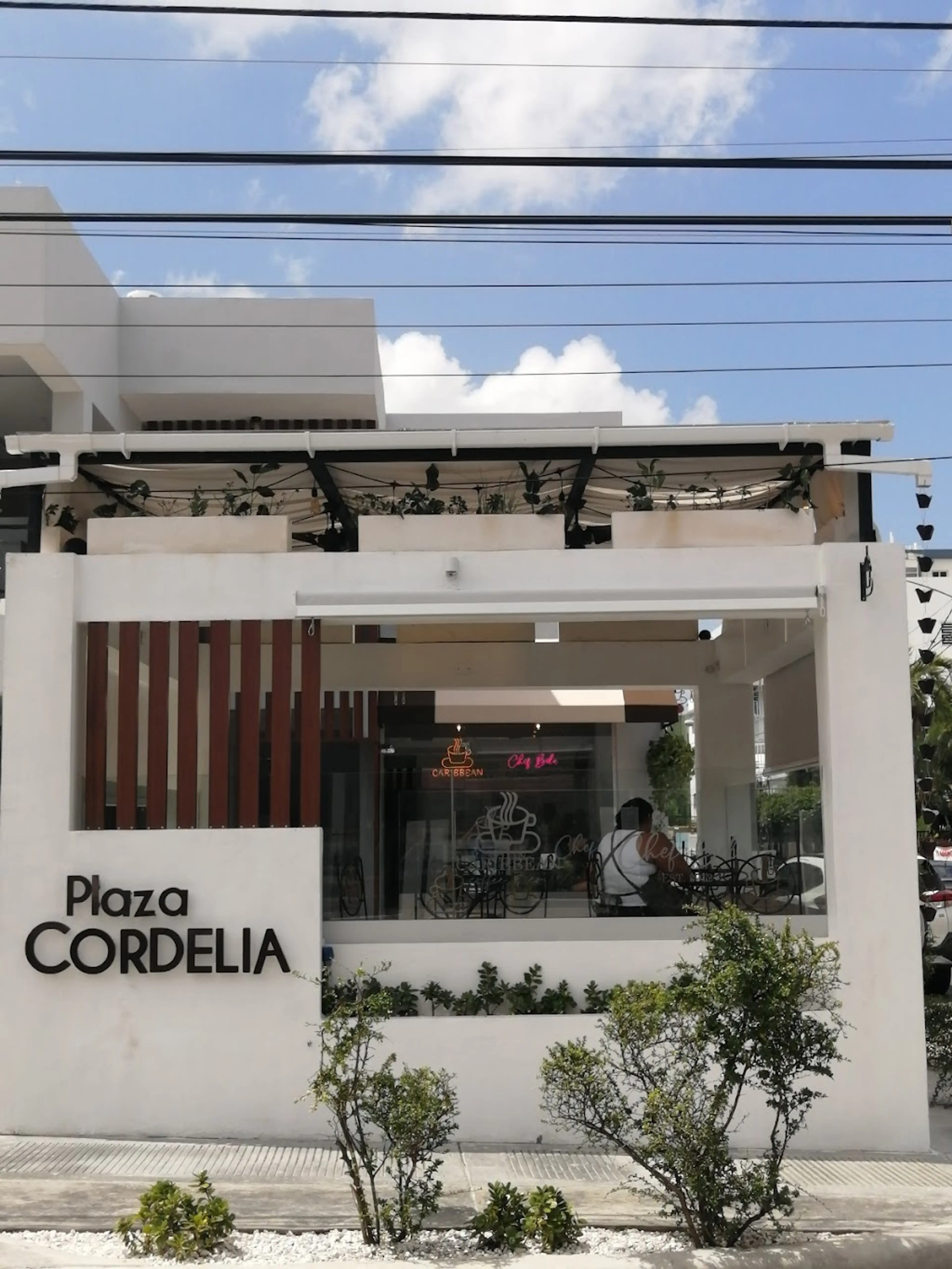
4Coffee Plantation
A tour of a working coffee plantation offers visitors the chance to learn about the coffee-making process, from bean to cup. The tour includes a visit to the plantation, a demonstration of the roasting process, and a coffee tasting.

5Rum Distillery
A tour of a rum distillery provides a behind-the-scenes look at how this popular Caribbean spirit is made. Visitors can learn about the distillation process, see the aging barrels, and sample a variety of rums.
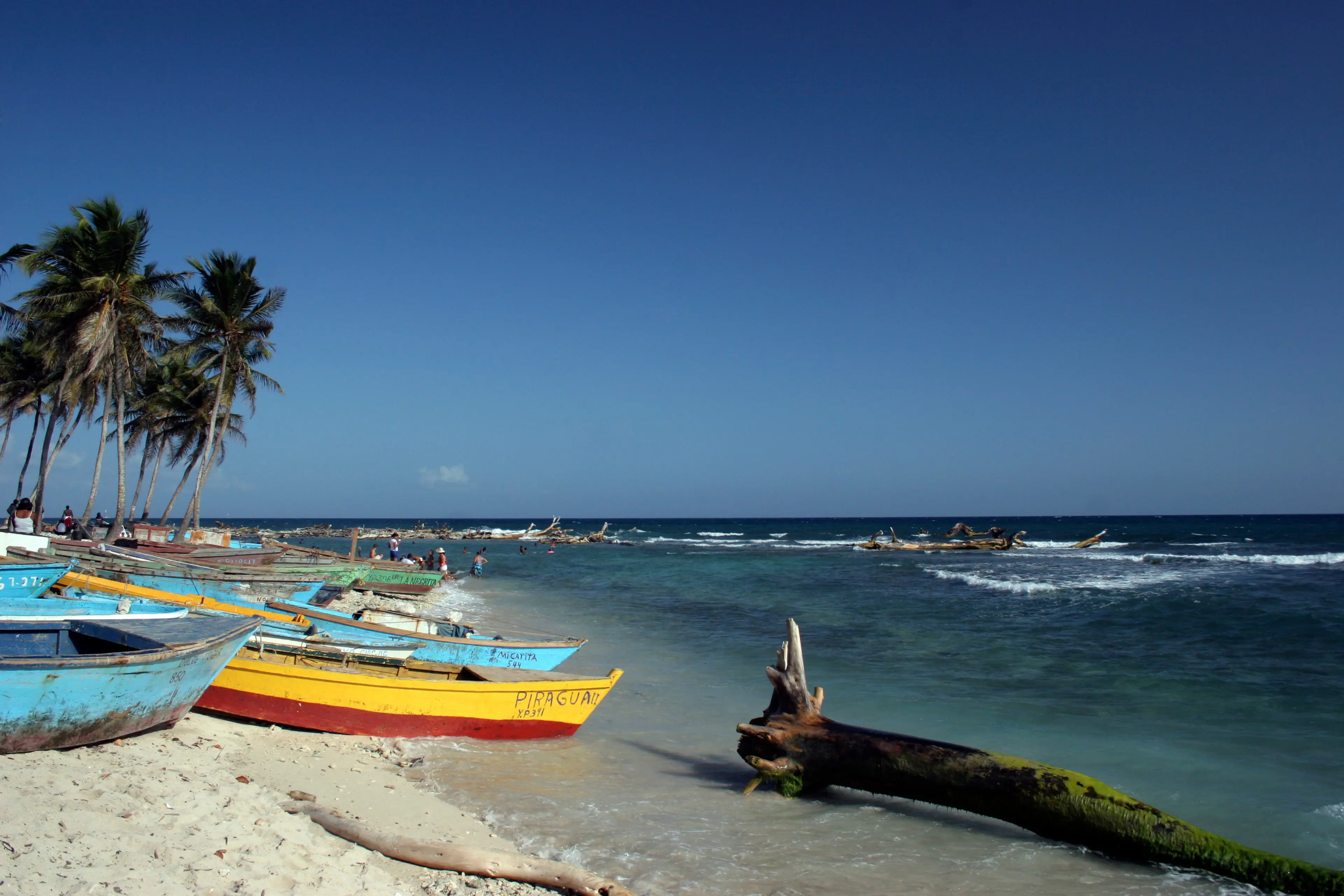
6Boca Chica Beach
A popular beach located about 30 kilometers east of Santo Domingo. The beach is known for its calm, shallow waters, making it a popular spot for swimming and water sports.
Local Food and Drinks (12)
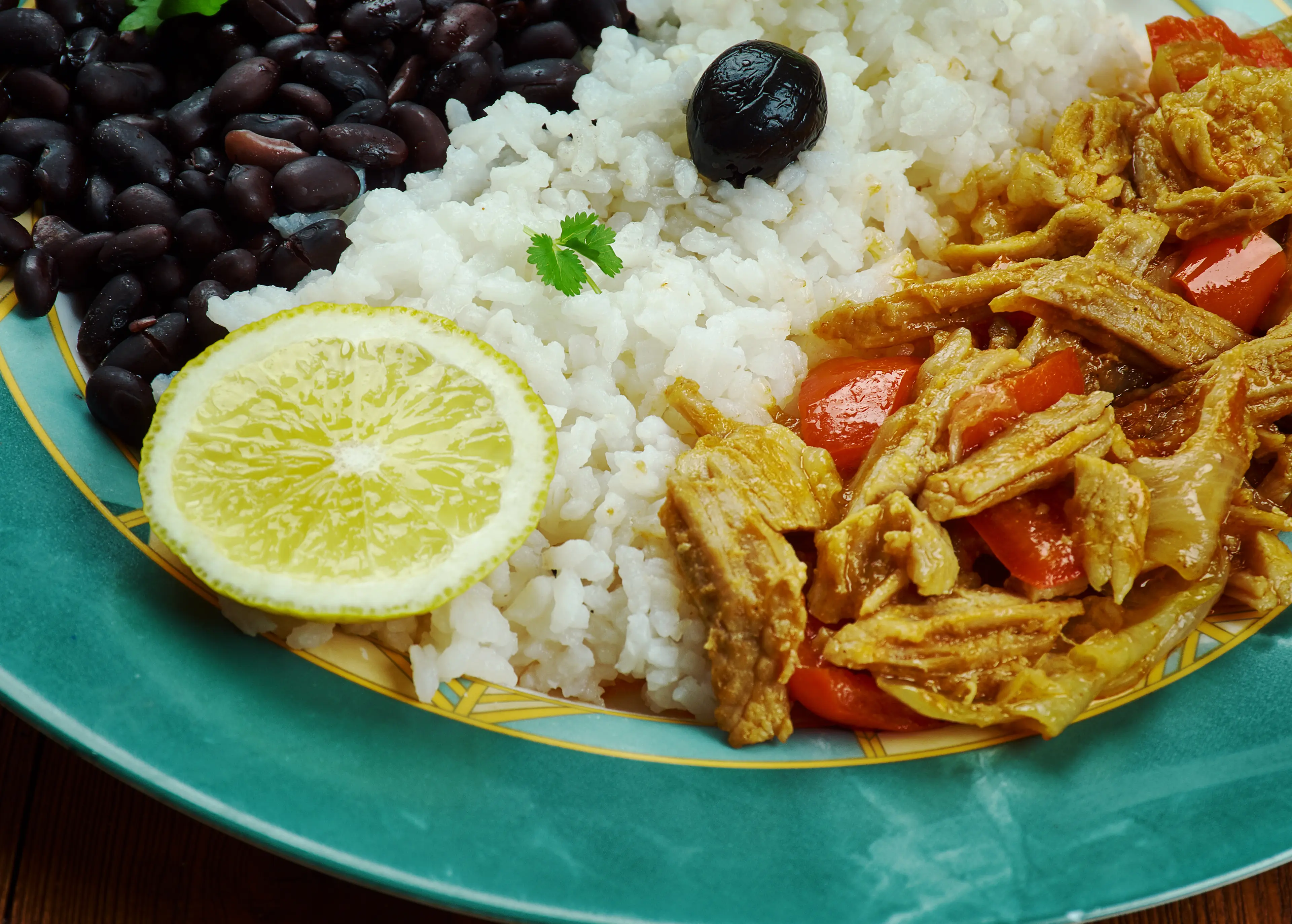
La Bandera
This is the most traditional Dominican dish, consisting of rice, red beans, and meat, usually chicken or beef. It's named 'La Bandera' (The Flag) because it's as Dominican as the country's flag.
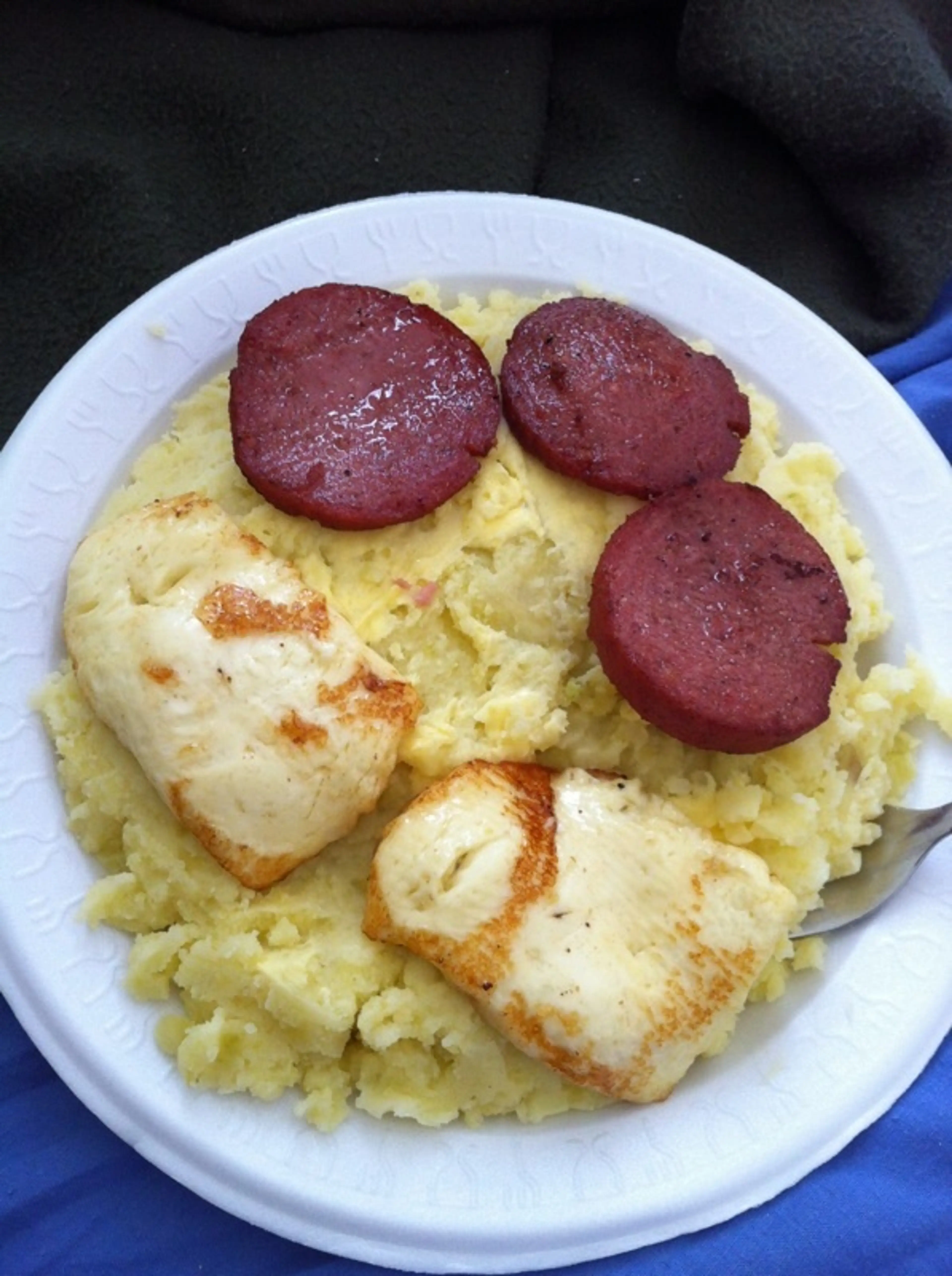
Mangú
Mangú is a popular breakfast dish in Santo Domingo, made from boiled and mashed plantains. It's typically served with fried eggs, salami, and cheese.
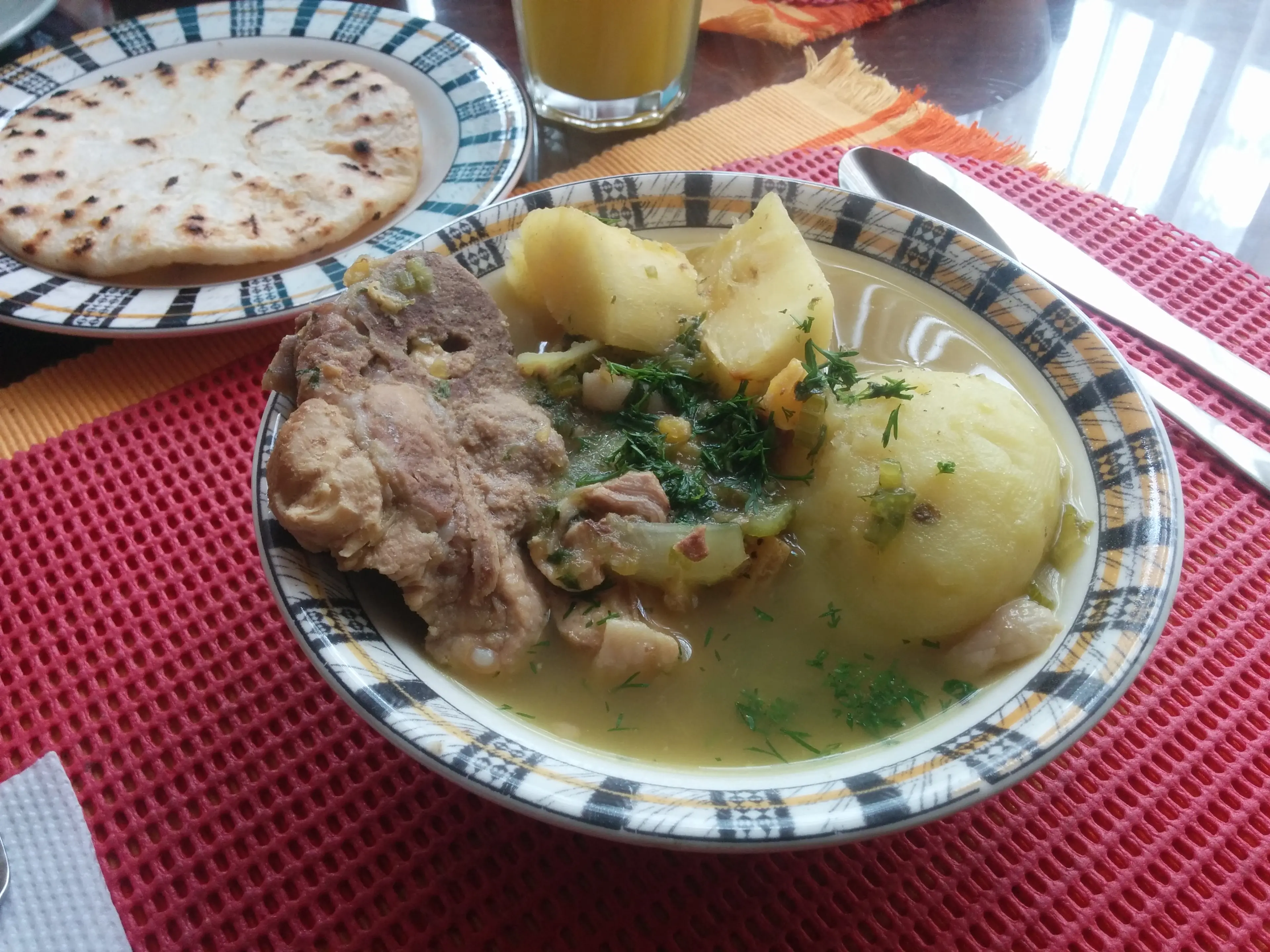
Sancocho
Sancocho is a hearty stew made with a variety of meats and root vegetables. It's a popular dish in Santo Domingo, especially during celebrations and family gatherings.

Morir Soñando
Morir Soñando, which translates to 'Die Dreaming', is a popular Dominican drink made from orange juice, milk, sugar, and ice. It's a refreshing drink that's perfect for Santo Domingo's tropical climate.
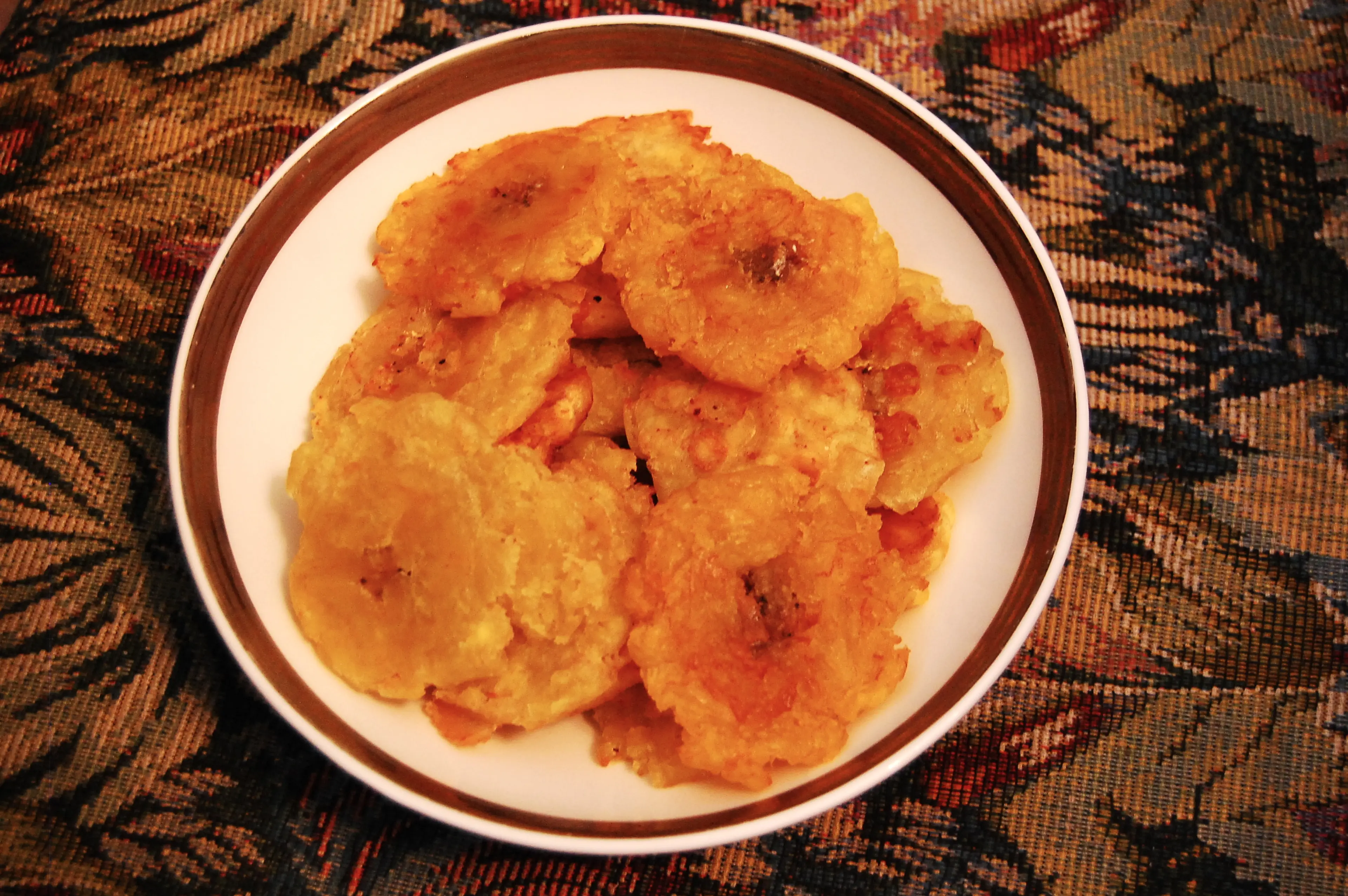
Tostones
Tostones are twice-fried plantain slices, a popular snack or side dish in Santo Domingo. They're crispy on the outside and soft on the inside, often served with a garlic sauce.
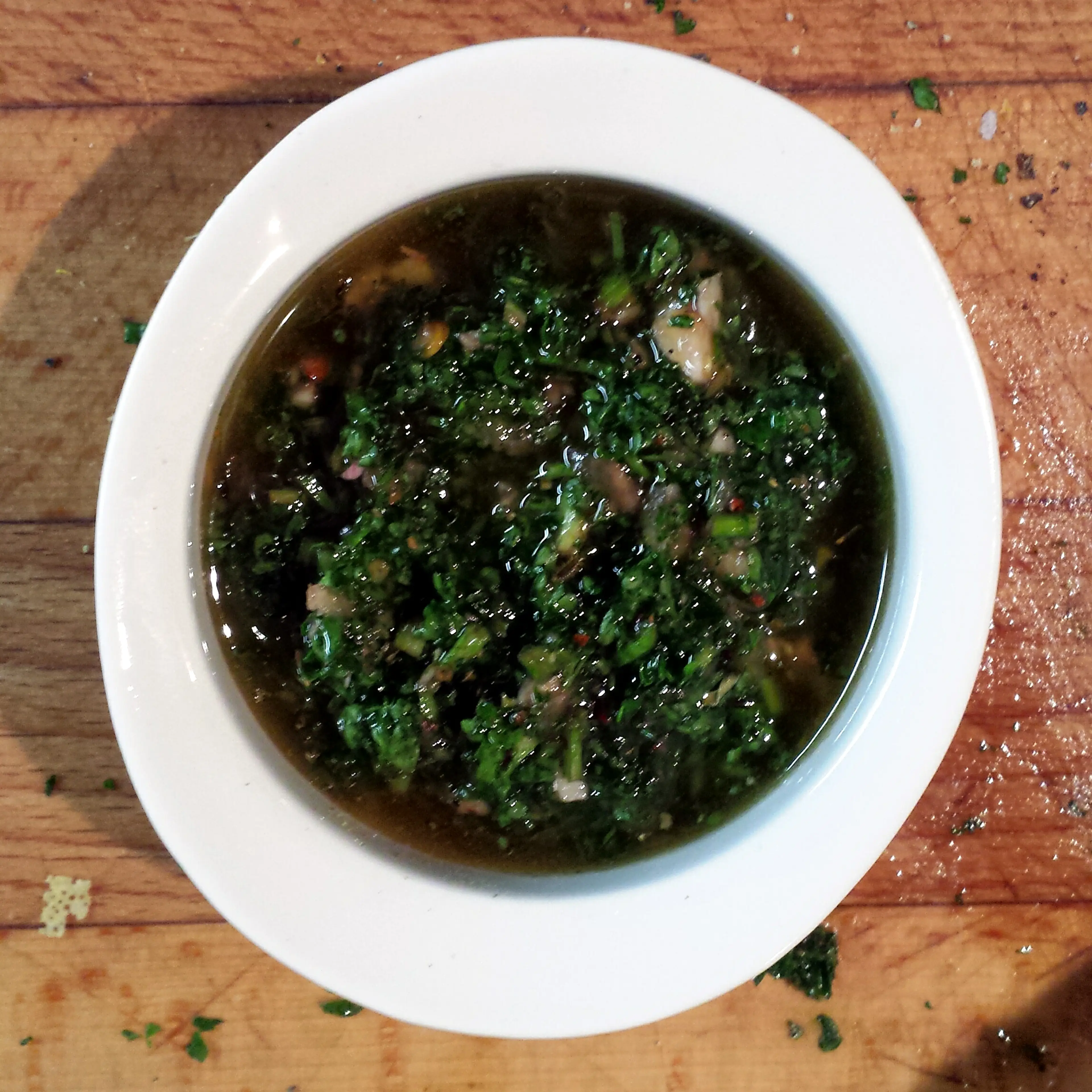
Chimichurri
Chimichurri, or 'Chimi', is a Dominican-style burger served on the streets of Santo Domingo. It's made with a seasoned beef patty, cabbage, and a special sauce, all served on a soft bun.
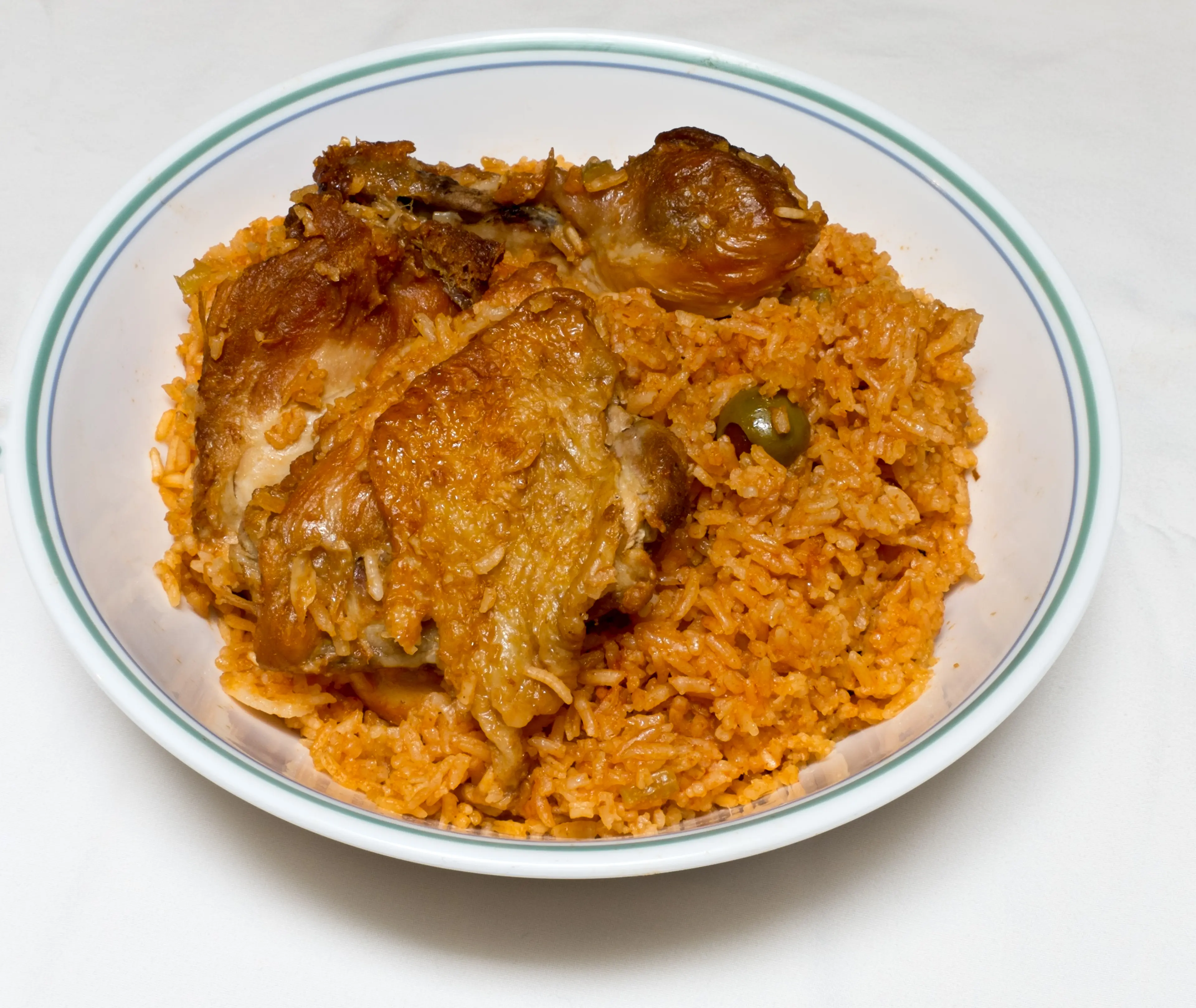
Locrio de Pollo
Locrio de Pollo is a Dominican-style chicken and rice dish, similar to a Spanish paella. It's a popular dish in Santo Domingo, often served for lunch or dinner.
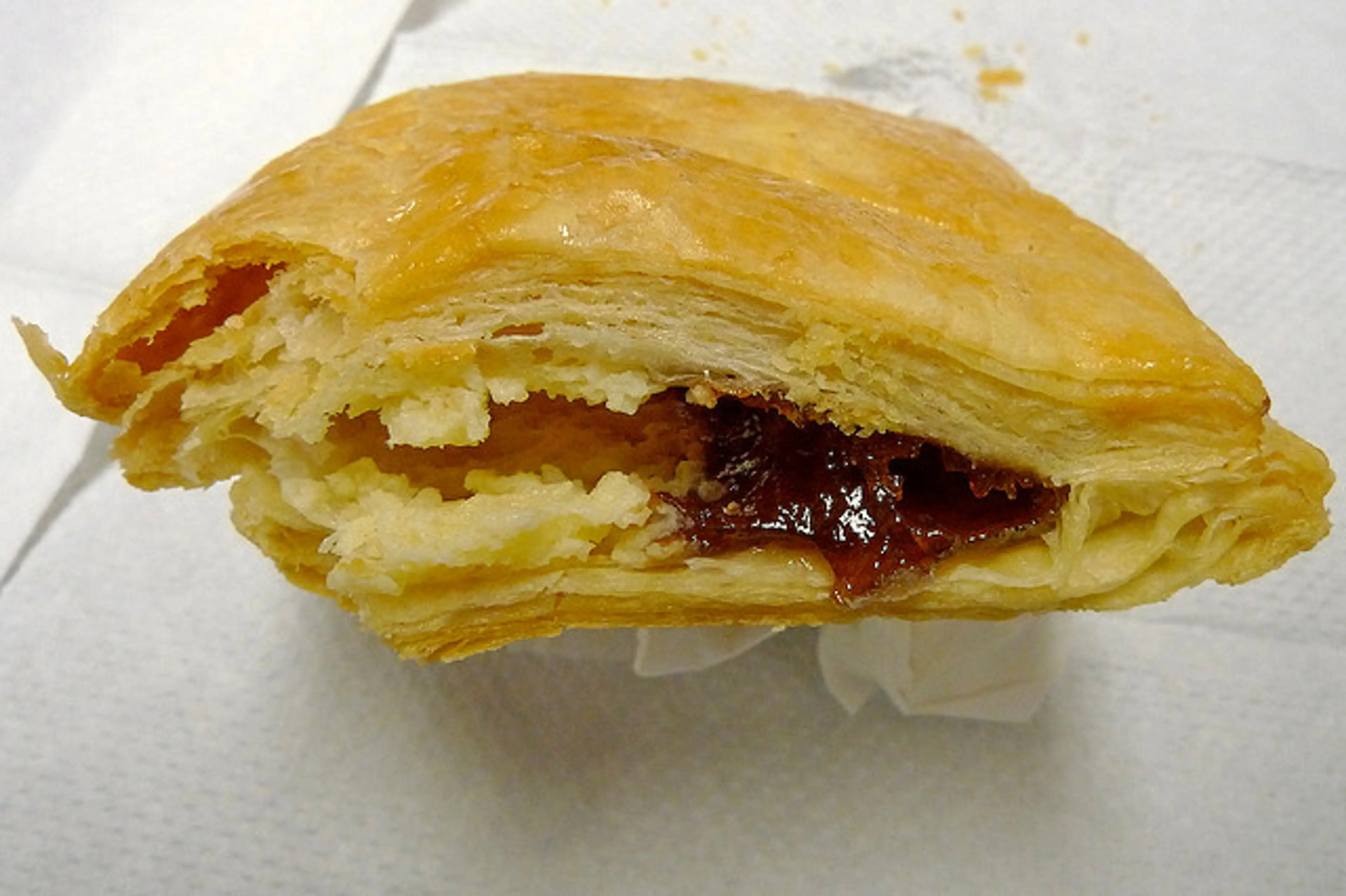
Pastelitos
Pastelitos are Dominican-style empanadas, filled with meat, cheese, or fruit. They're a popular snack in Santo Domingo, often enjoyed with a cold beer.
Chenchen
Chenchen is a traditional Dominican dish made from cracked corn, coconut milk, and various spices. It's a popular side dish in Santo Domingo, often served with stewed goat meat.
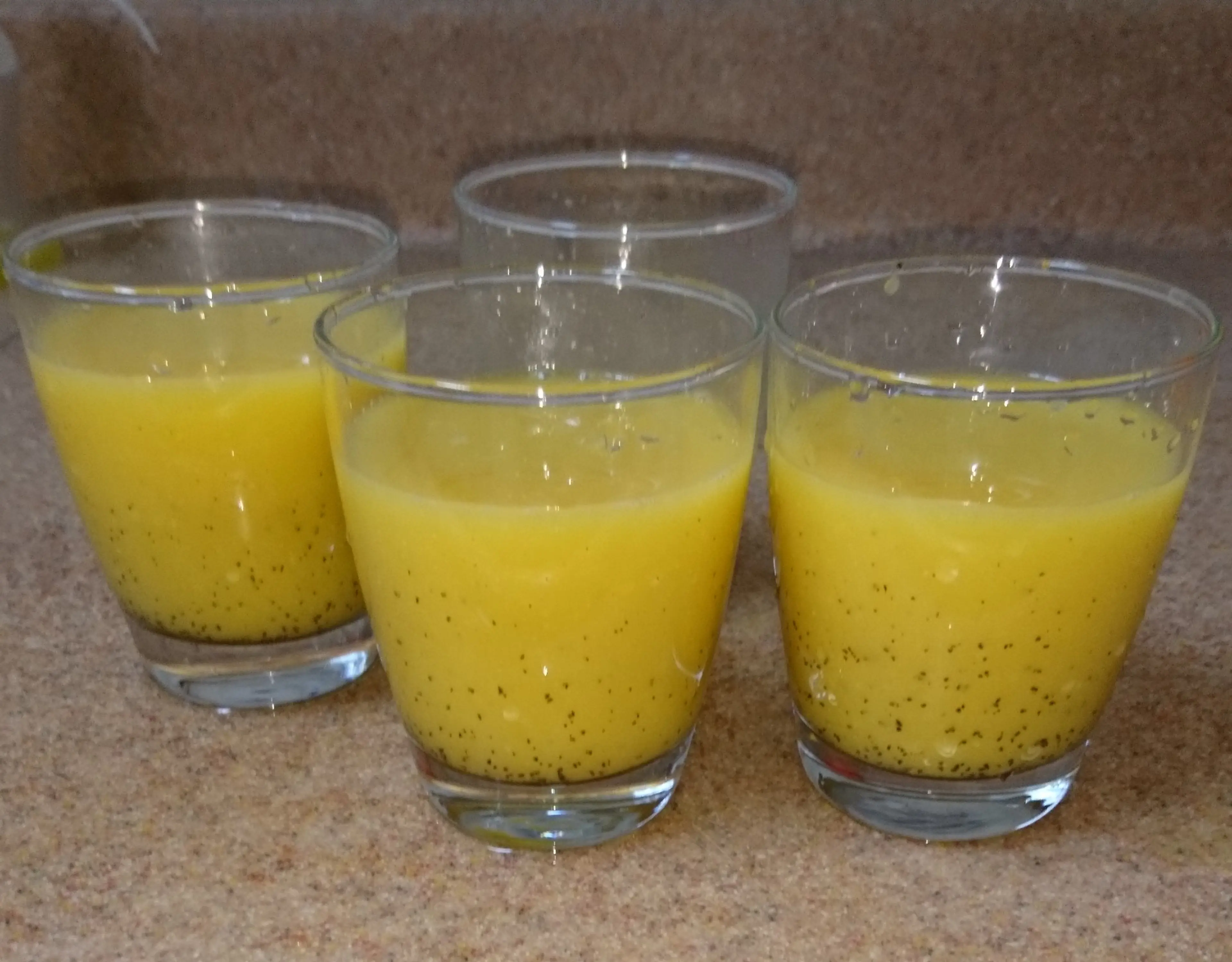
Jugo de Chinola
Jugo de Chinola is a refreshing passion fruit juice, a popular drink in Santo Domingo. It's often served chilled, perfect for the tropical climate.
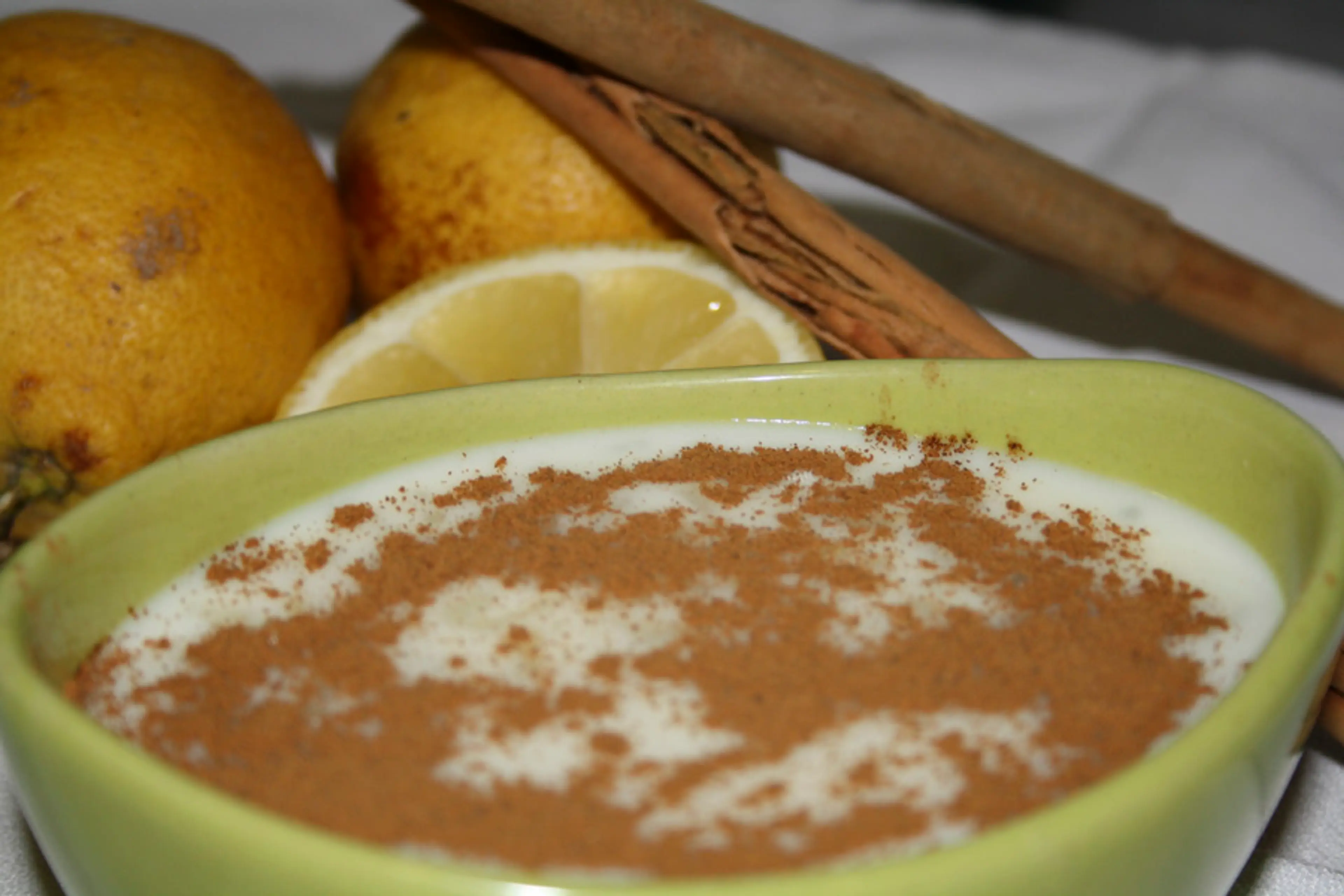
Arroz con Leche
Arroz con Leche is a traditional Dominican dessert, made from rice, milk, sugar, and cinnamon. It's a popular sweet treat in Santo Domingo, often enjoyed after a meal.
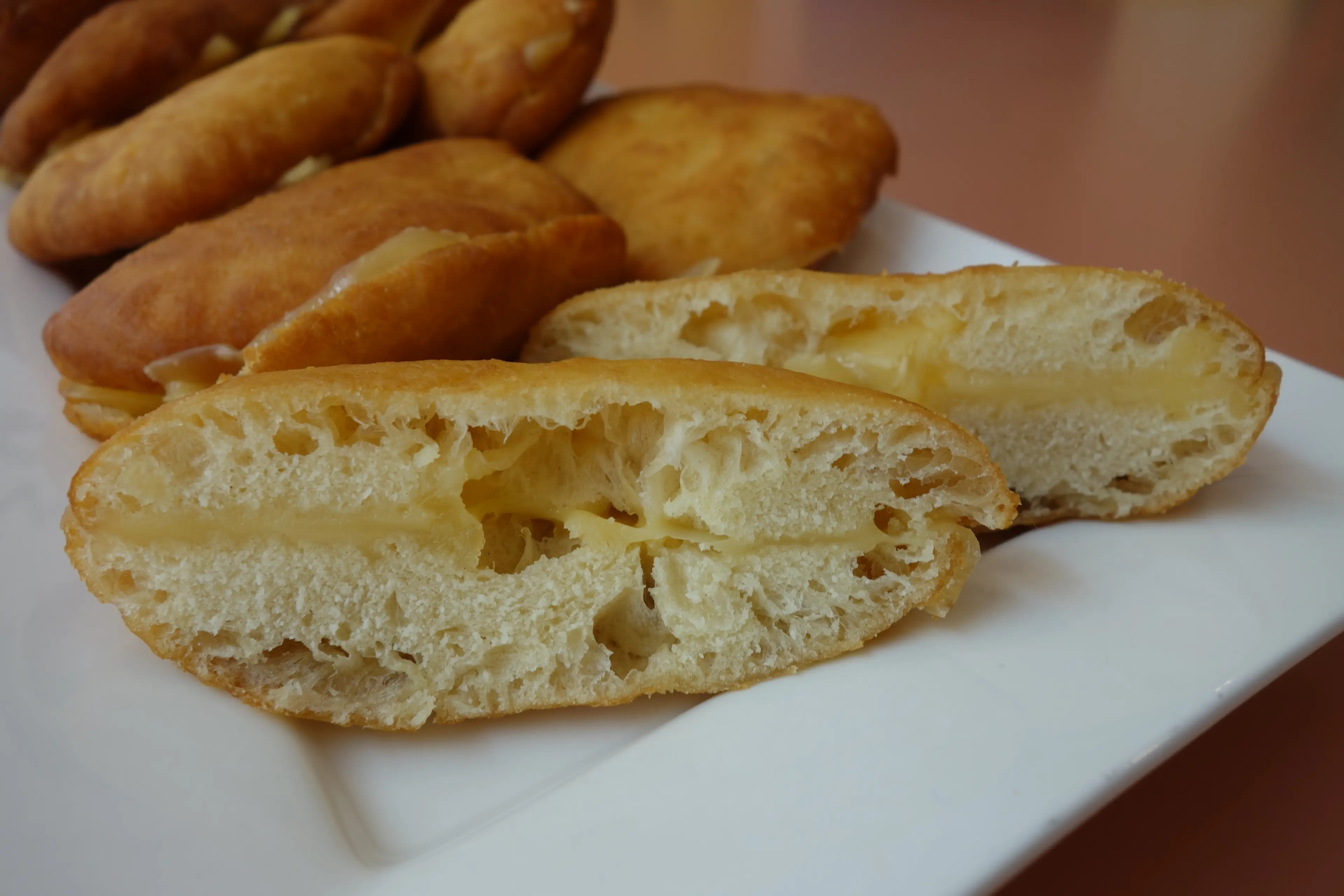
Yaniqueques
Yaniqueques are deep-fried flatbread, a popular street food in Santo Domingo. They're named after 'Johnnycakes', a similar dish from the United States, but have a unique Dominican twist.
Best time to visit
The best time to visit Santo Domingo, Dominican Republic is between November and March. During these months, the weather is warm and pleasant, perfect for exploring the city and enjoying the beaches. This period also avoids the hurricane season which typically runs from June to November. However, it's also the peak tourist season, so expect larger crowds and higher prices. If you prefer a quieter experience, the shoulder seasons of April to June and September to October can also offer good weather with fewer tourists.
How to get around
Car Rental
Renting a car is a convenient way to get around Santo Domingo. There are several car rental companies available at the airport and throughout the city. However, be aware that driving in Santo Domingo can be challenging due to heavy traffic and different driving customs.
Taxi
Taxis are a common way to get around Santo Domingo. They are readily available throughout the city and can be hailed on the street or booked in advance. Taxis do not have meters, so it's best to negotiate the fare before starting your journey.
Ridesharing
Ridesharing services such as Uber are available in Santo Domingo. This can be a convenient and cost-effective way to get around the city, especially if you are unfamiliar with the area. You can book a ride using the app on your smartphone.
Public Bus
Public buses, known as 'guaguas', are a cheap way to get around Santo Domingo. They cover most areas of the city, but can be crowded and may not have air conditioning. It's also important to note that they don't have set schedules.
Metro
Santo Domingo has a modern and efficient metro system. It's a fast and affordable way to get around the city, especially during peak traffic hours. There are two lines that cover a large part of the city.
Motorcycle Taxi
Motorcycle taxis, or 'motoconchos', are a common form of transport in Santo Domingo. They are a quick and cheap way to get around, especially in heavy traffic. However, they can be risky as safety standards are not always adhered to.
Bicycle
Santo Domingo is a bike-friendly city with several bike lanes and bike rental services. Cycling can be a fun and healthy way to explore the city. However, be aware of traffic and always wear a helmet for safety.
Foot
Walking is a great way to explore Santo Domingo, especially the historic Zona Colonial area. The city is quite walkable, but be aware of traffic and always use pedestrian crossings where available.
Important information
Currency DOP
Time zoneUTC-4
Driving sideRight
Emergency phone911
Drinking waterOpt for bottled water
Power sockets
Voltage120 V
Things to know about Santo Domingo, Dominican Republic as a first time visitor
1
The official language of the Dominican Republic is Spanish, so it would be beneficial to learn a few basic phrases.
2
The currency used in Santo Domingo is the Dominican Peso (DOP). It's advisable to have some local currency on hand for small purchases.
3
Credit cards are widely accepted in most places, but it's always good to carry some cash for smaller establishments or street vendors.
4
Tipping is customary in Santo Domingo. A 10% service charge is often added to your bill, but it's common to leave an additional tip if the service was good.
5
The tap water in Santo Domingo is not safe to drink. Always opt for bottled water.
6
Public transportation is available but can be crowded and confusing for first-time visitors. Taxis or rental cars are recommended.
7
Santo Domingo has a tropical climate. The average temperature is around 77°F (25°C) in winter and 82°F (28°C) in summer.
8
The hurricane season in the Dominican Republic runs from June to November. It's important to check the weather forecast before your trip.
9
The Dominican Republic operates on Atlantic Standard Time all year round, which is four hours behind Greenwich Mean Time (GMT-4).
10
It's important to dress modestly when visiting religious sites or rural areas.
11
The Dominican Republic has a 911 emergency system, similar to the United States.
12
The electricity standard in Santo Domingo is 110 volts AC (60 cycles), the same as in the United States. If your devices use a different standard, you'll need a converter.
13
The Dominican Republic has a high crime rate, so it's important to take precautions. Avoid displaying expensive jewelry or electronics, and always keep your belongings secure.
14
Healthcare facilities in Santo Domingo are generally good, but it's recommended to have travel insurance that covers medical expenses.
15
The Dominican Republic has strict laws on drugs. Possession, use, or trafficking of illegal drugs can result in severe penalties.
16
It's customary to greet people with a handshake, direct eye contact, and a friendly smile.
17
Dominican cuisine is a mix of Spanish, African, and Taino influences. Try local dishes like mofongo, sancocho, and tostones.
18
The legal drinking age in the Dominican Republic is 18 years old.
19
Public displays of affection are common and socially acceptable in the Dominican Republic.
20
Always ask for permission before taking photos of locals. Some may ask for a small fee in return.
Basic Spanish to know as a first time visitor
English phrase | Native phrase | Pronunciation | When to use it |
|---|---|---|---|
Hello | Hola | oh-la | Greeting someone |
Goodbye | Adiós | ah-dee-ohs | Leaving someone |
Please | Por favor | por fa-vor | Making a request |
Thank you | Gracias | gra-see-as | Expressing gratitude |
Yes | Sí | see | Agreeing or confirming |
No | No | no | Disagreeing or denying |
Excuse me | Perdón | per-don | Getting someone's attention or apologizing |
I'm sorry | Lo siento | lo see-en-to | Apologizing |
Do you speak English? | ¿Hablas inglés? | ab-las in-gles | Asking if someone speaks English |
I don't understand | No entiendo | no en-tee-en-do | When you don't understand what's being said |
Where is the bathroom? | ¿Dónde está el baño? | don-de es-ta el ban-yo | Asking for directions to the bathroom |
How much does this cost? | ¿Cuánto cuesta esto? | quan-to cues-ta es-to | Asking the price of something |
I would like... | Me gustaría... | me gus-ta-ree-a | Making a request or order |
Help! | ¡Ayuda! | a-yu-da | In an emergency or when in need of assistance |
Can I have the menu, please? | ¿Puedo tener el menú, por favor? | pwe-do te-ner el me-nu, por fa-vor | At a restaurant, asking for the menu |
Water | Agua | a-gua | Asking for water |
Beer | Cerveza | ser-ve-za | Ordering a beer |
Coffee | Café | ca-fe | Ordering a coffee |
Tea | Té | te | Ordering a tea |
Cheers! | ¡Salud! | sa-lud | Making a toast |
Packing List
Clothing
Lightweight clothing
Underwear
Socks
Swimwear
Sunglasses
Hat for sun protection
Comfortable walking shoes
Flip flops for the beach
Light jacket or sweater for cooler evenings
Toiletries
Travel-sized shampoo and conditioner
Body wash or soap
Toothbrush and toothpaste
Deodorant
Razor and shaving cream
Sunscreen
Insect repellent
Prescription medications
First aid kit
Hand sanitizer
Travel documents and essentials
Passport
Driver's license or ID card
Credit and debit cards
Cash in local currency
Travel insurance documents
Hotel and transportation reservation confirmations
Emergency contact information
Electronics and gadgets
Smartphone
Charger for smartphone
Headphones
Camera
Charger for camera
Universal power adapter
Portable power bank
Miscellaneous items
Travel pillow
Earplugs and eye mask
Snacks
Reusable water bottle
Books or e-reader for entertainment
Travel guidebook for Santo Domingo
Spanish-English dictionary or phrasebook
Weather Conditions
Santo Domingo, the capital of the Dominican Republic, is a tropical paradise with a warm climate year-round. However, the weather can vary, so it's important to plan accordingly. The city experiences a tropical monsoon climate, which means it has a hot and humid season, as well as a cooler, drier season. The hottest months are typically between May and October, with temperatures often reaching 90°F (32°C). During these months, you should pack lightweight, breathable clothing, sunscreen, and a hat to protect yourself from the sun. From November to April, the weather is generally cooler and more comfortable, with temperatures ranging from 75°F to 85°F (24°C to 29°C). During this period, you might want to pack a light sweater or jacket for the evenings, as it can get a bit chilly. Rainfall in Santo Domingo is highest between May and November, with the peak in precipitation typically occurring in October. If you're visiting during these months, it's a good idea to pack a raincoat or umbrella. Despite the rain, these months can still be a great time to visit, as the showers are usually brief and followed by sunshine. Regardless of when you visit, it's always a good idea to stay hydrated and protect yourself from the sun. The UV index in Santo Domingo can be high, so don't forget your sunscreen, sunglasses, and a hat. Lastly, keep an eye on the weather forecast, especially during the Atlantic hurricane season, which runs from June to November. While Santo Domingo is not frequently hit by hurricanes, it's always better to stay informed and prepared. Enjoy your trip to Santo Domingo! It's a beautiful city with a lot to offer, no matter the weather.
| Month | Hi / Lo (°C) | Weather Overview |
|---|---|---|
January | 29° / 19° | January is a pleasant month to visit Santo Domingo, with temperatures ranging from 19°C to 29°C. The weather is comfortable for outdoor activities. |
February | 30° / 19° | In February, the weather remains comfortable with temperatures between 19°C and 30°C. It's a great time for beach activities. |
March | 31° / 20° | March sees a slight increase in temperature, ranging from 20°C to 31°C. It's an ideal time for water sports and exploring the city. |
April | 32° / 21° | April is a warm month with temperatures between 21°C and 32°C. It's a perfect time for swimming and sunbathing. |
May | 32° / 22° | May experiences similar temperatures as April, ranging from 22°C to 32°C. It's a good time for sightseeing and enjoying the local cuisine. |
June | 33° / 23° | June is a bit hotter with temperatures between 23°C and 33°C. It's a great time for beach activities and exploring the nightlife. |
July | 33° / 23° | July experiences the same temperatures as June, ranging from 23°C to 33°C. It's an ideal time for water sports and outdoor activities. |
August | 33° / 23° | August is also a warm month with temperatures between 23°C and 33°C. It's a perfect time for swimming and sunbathing. |
September | 33° / 23° | September sees similar temperatures as August, ranging from 23°C to 33°C. It's a good time for sightseeing and enjoying the local cuisine. |
October | 32° / 22° | October experiences a slight decrease in temperature, ranging from 22°C to 32°C. It's a great time for beach activities and exploring the city. |
November | 31° / 21° | November is a pleasant month with temperatures between 21°C and 31°C. It's an ideal time for water sports and outdoor activities. |
December | 30° / 20° | December is a comfortable month to visit Santo Domingo, with temperatures ranging from 20°C to 30°C. The weather is perfect for exploring the city and enjoying the local culture. |
Did you know?
Places near by Santo Domingo, Dominican Republic
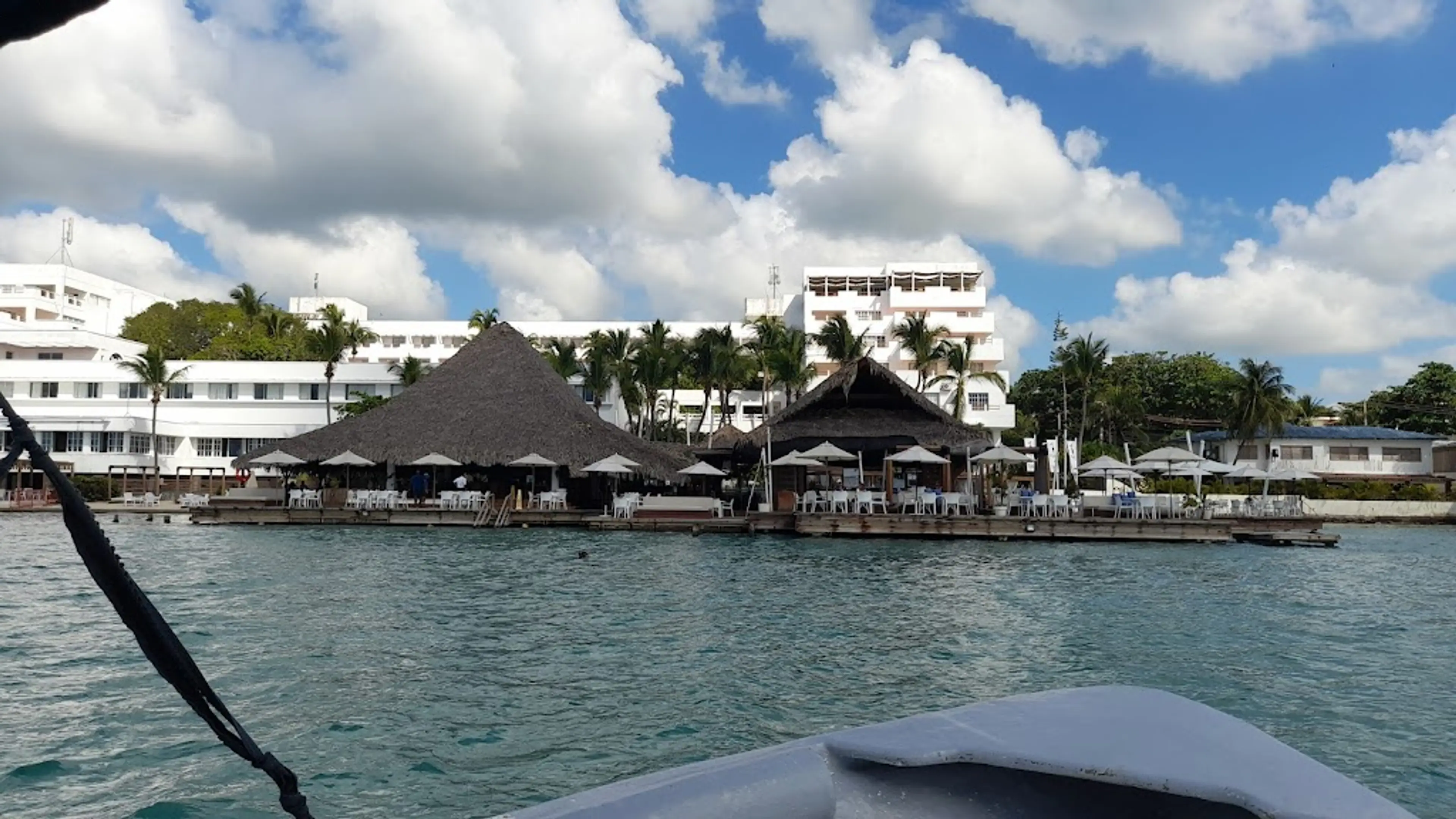
Boca Chica
Famous beach town known for its clear turquoise waters and white sand beaches.

Los Tres Ojos
A natural park featuring three open-air limestone caves filled with crystal-clear lakes.
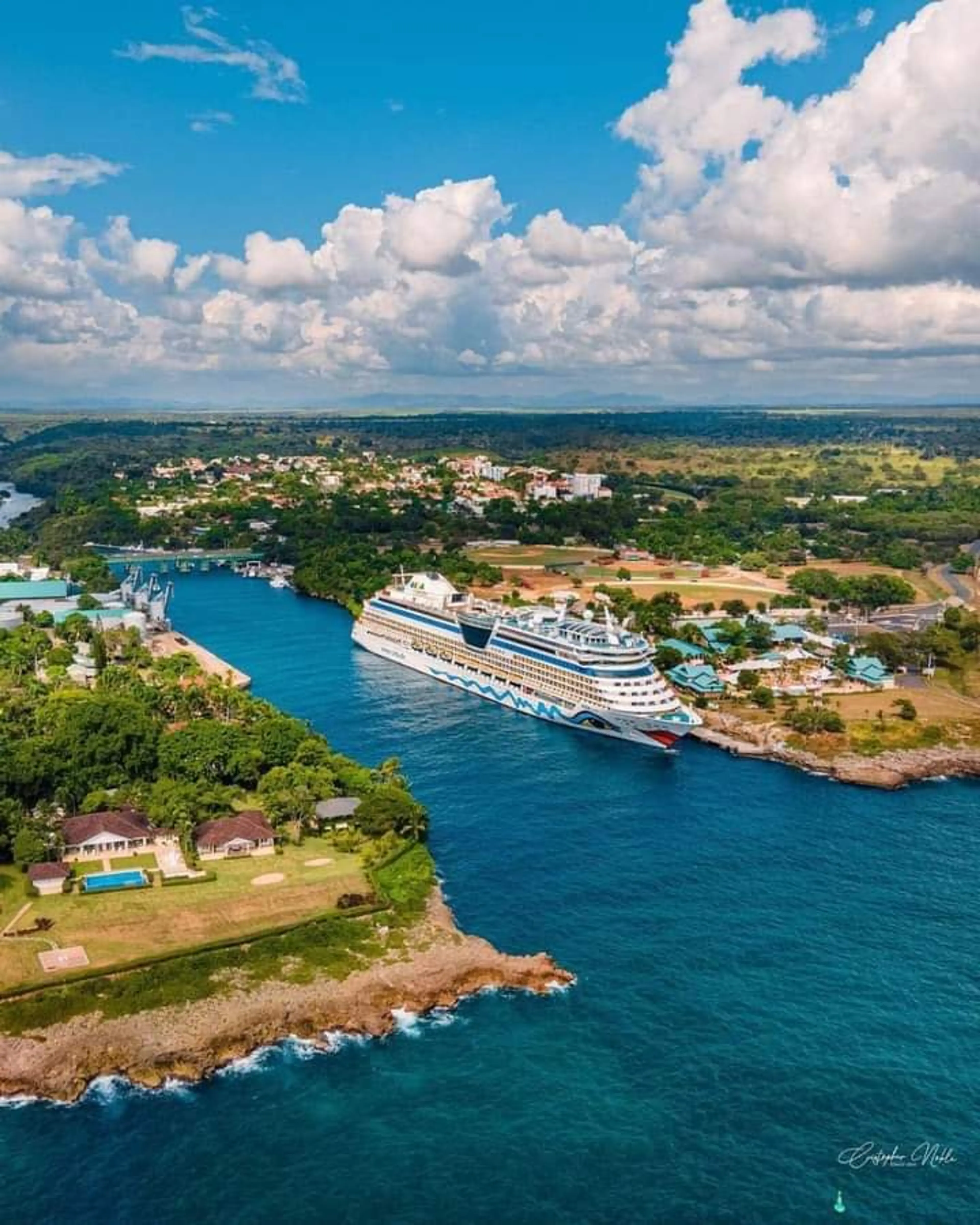
La Romana
City known for its resorts, golfing, and Altos de Chavón, a replica of a 16th-century Mediterranean village.
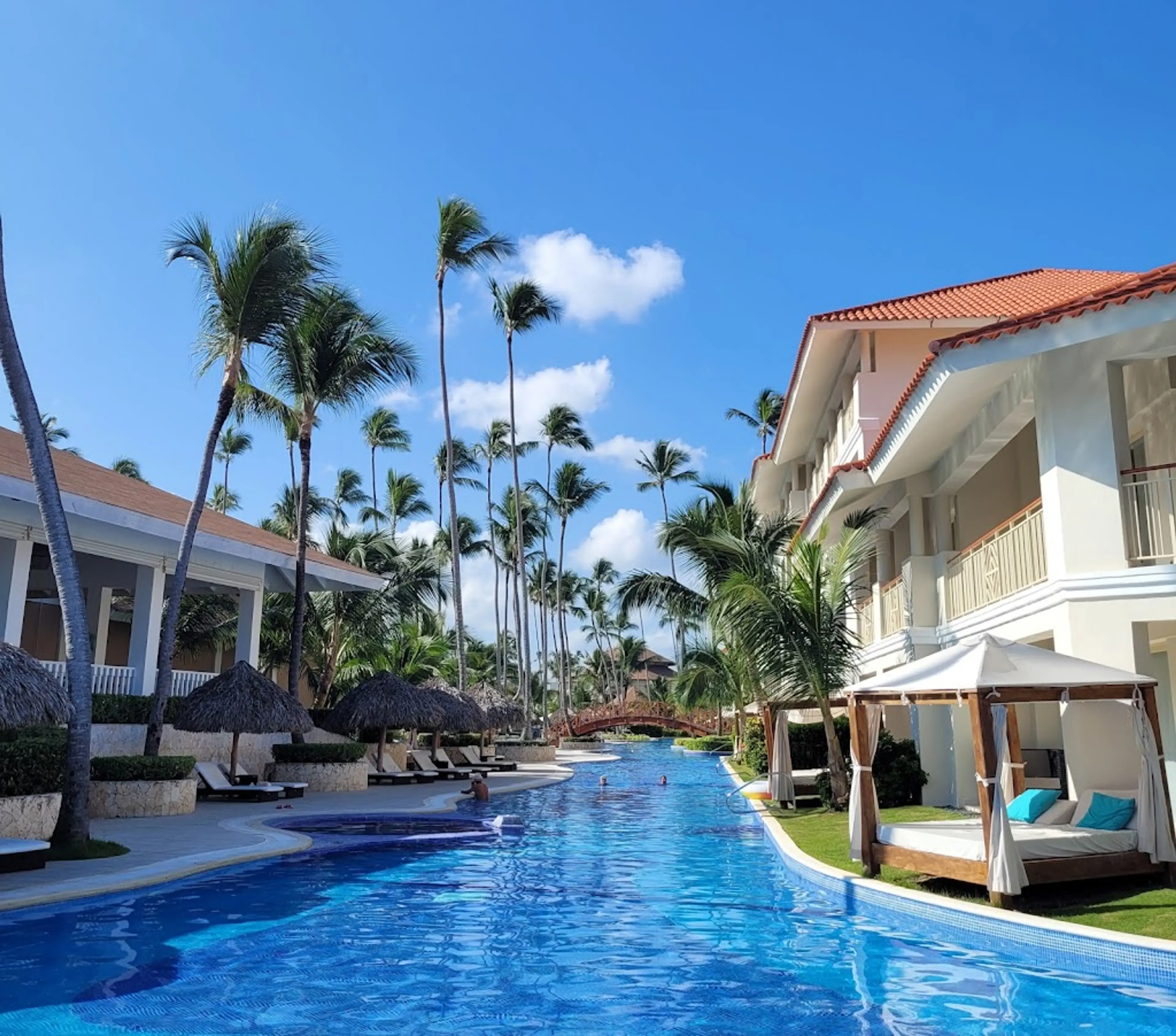
Punta Cana
Famous resort town known for its beautiful beaches and clear waters. Home to the Punta Cana International Airport.
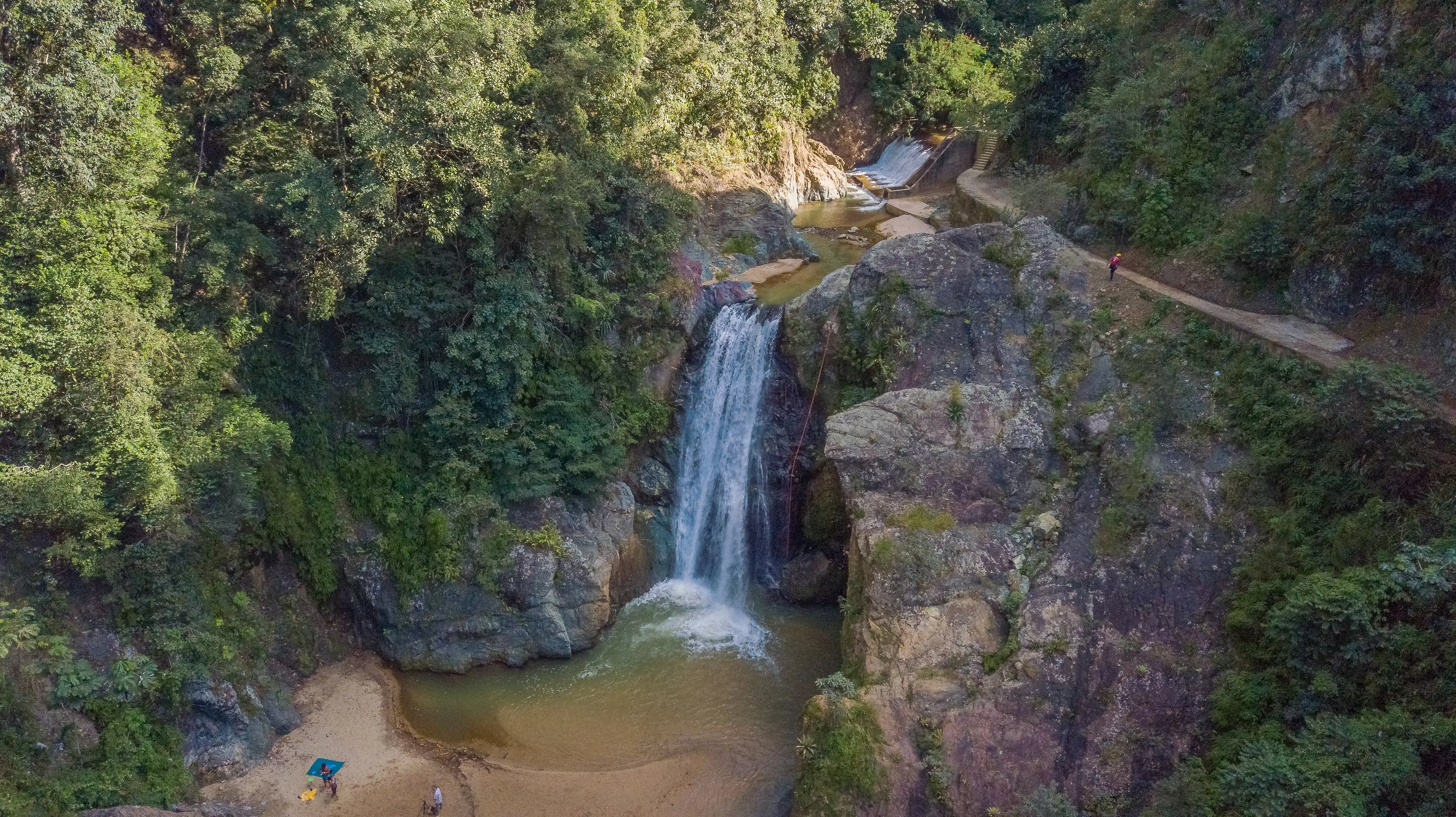
Jarabacoa
Mountain town known for its cool climate, rivers, and outdoor activities like rafting and hiking.
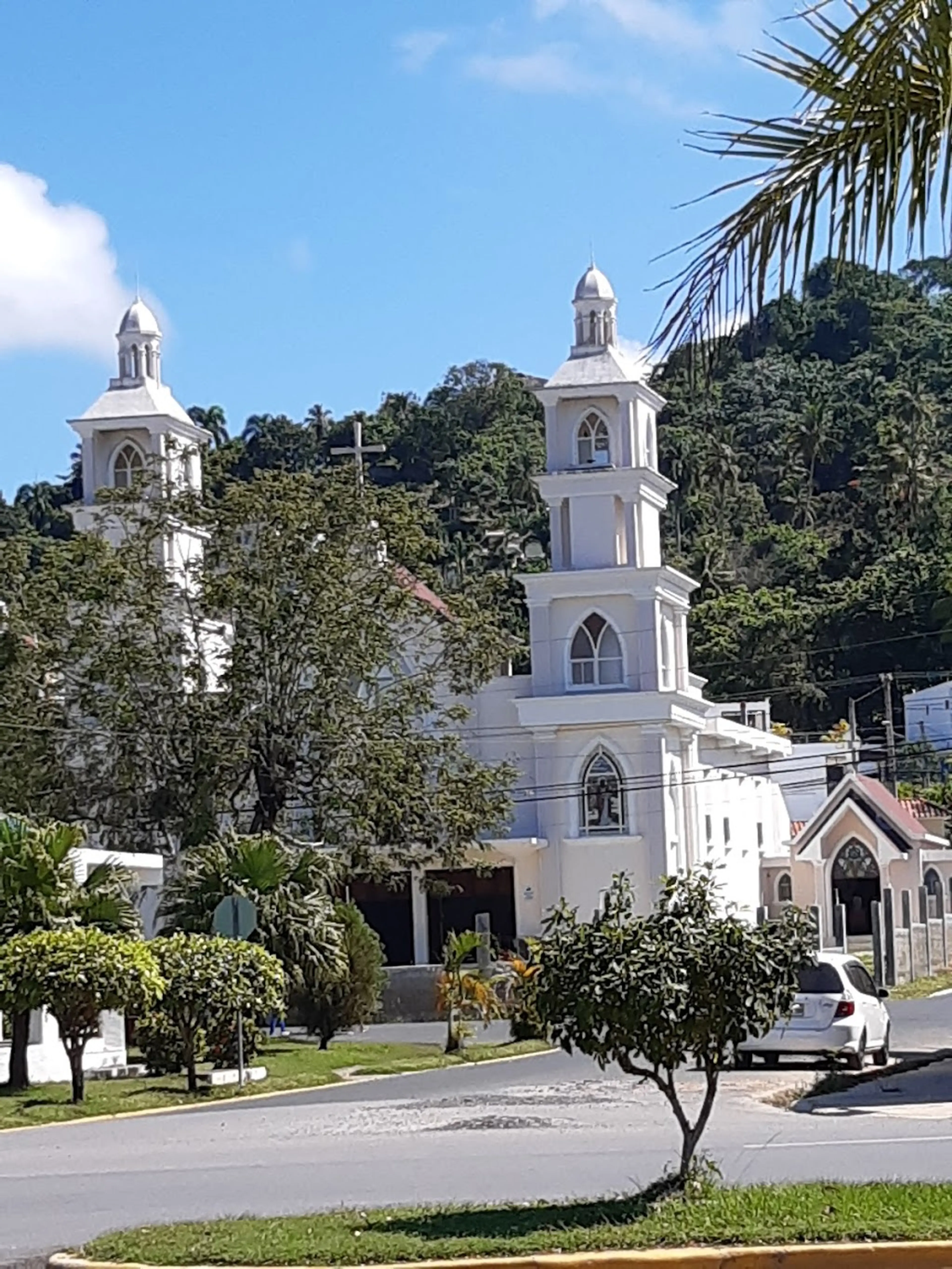
Samana
Known for its beautiful beaches, waterfalls, mountains and Whale Watching.

Constanza
Mountain town known for its cool climate and beautiful landscapes, including the Valle Nuevo National Park.

Puerto Plata
City known for its beaches, resorts and historic sites, including the 16th-century Fortaleza San Felipe.
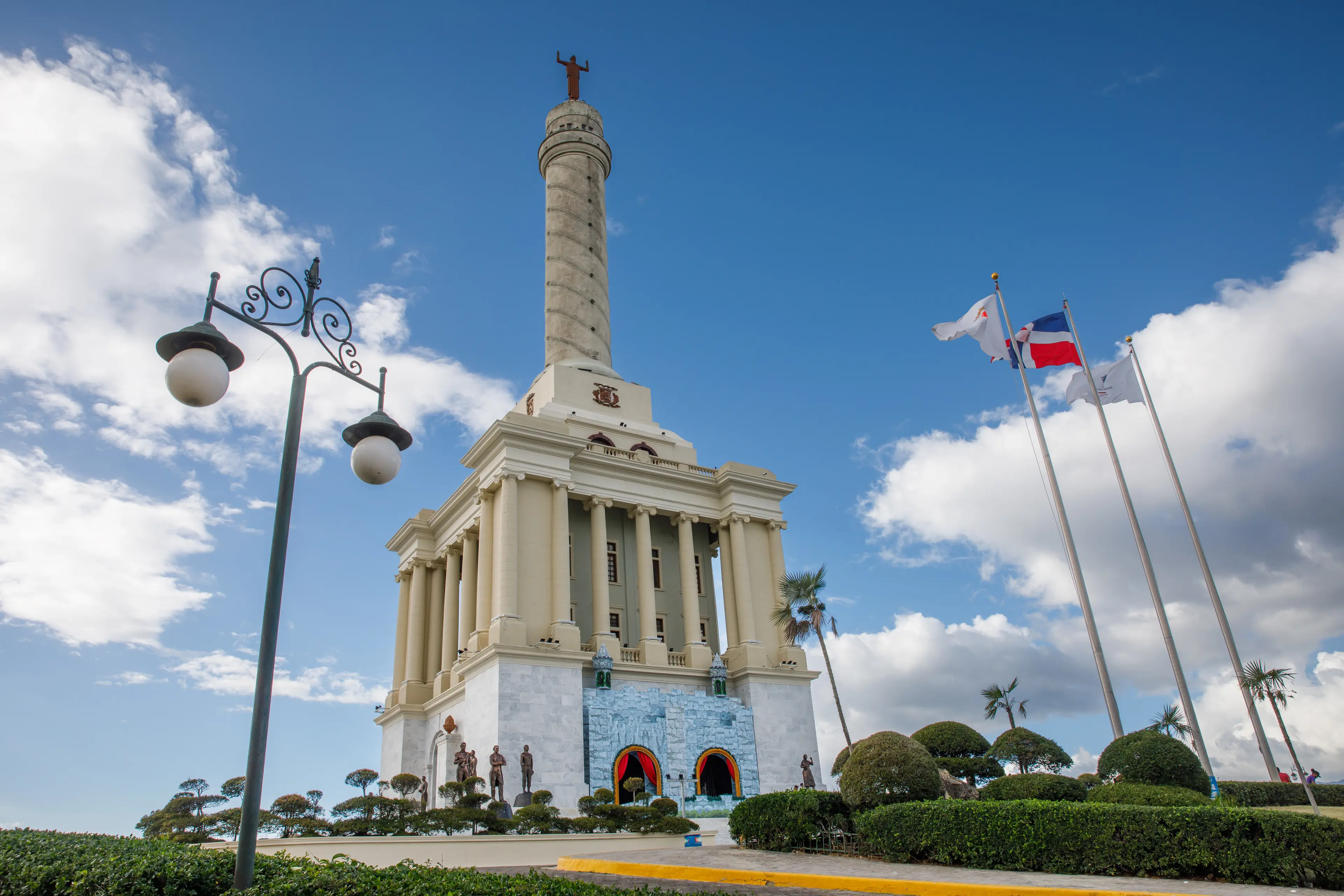
Santiago de los Caballeros
The second largest city in the Dominican Republic, known for its tobacco plantations and vibrant nightlife.
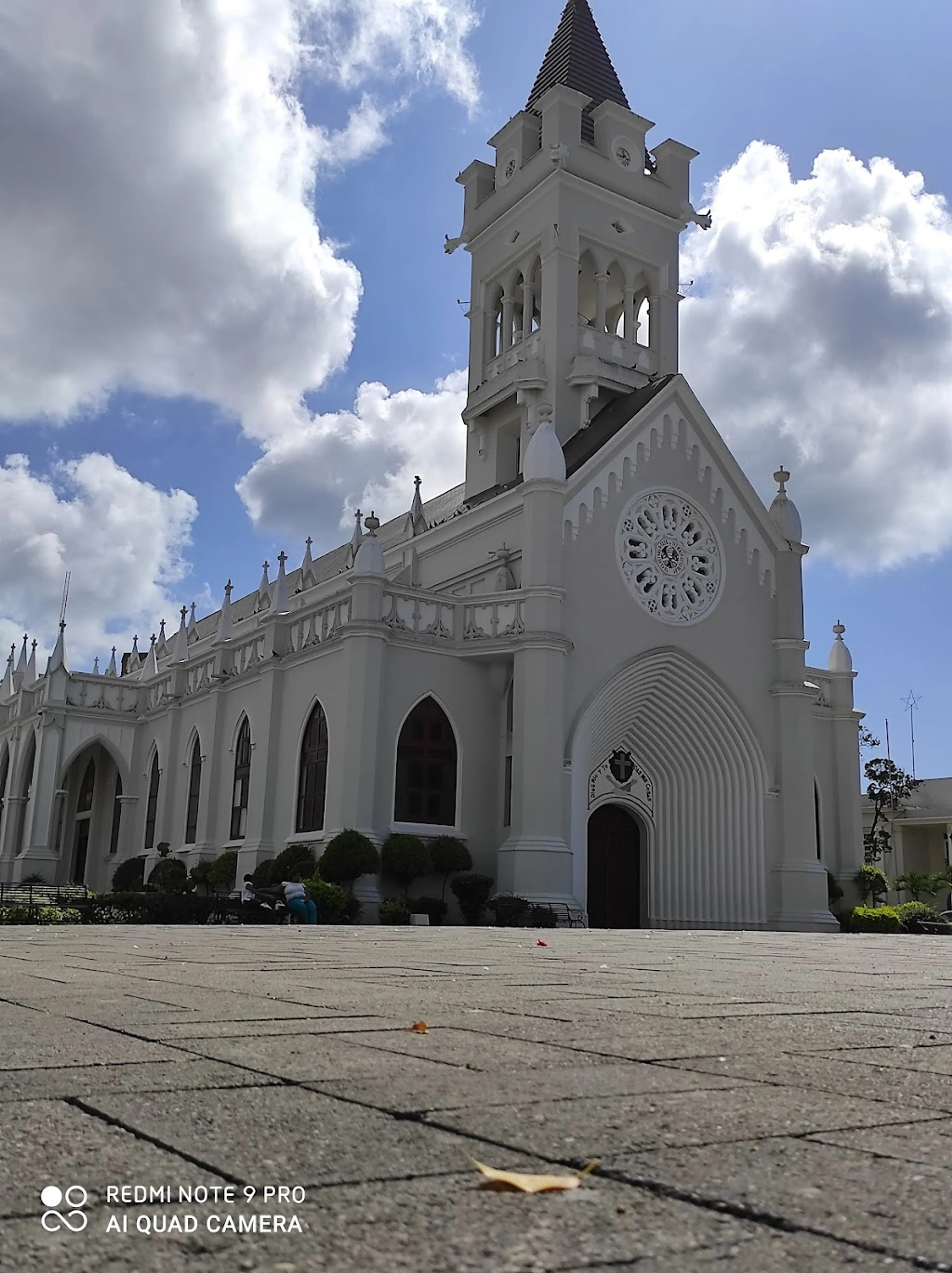
San Pedro de Macoris
Known for its historic architecture, baseball players, and sugar cane production.